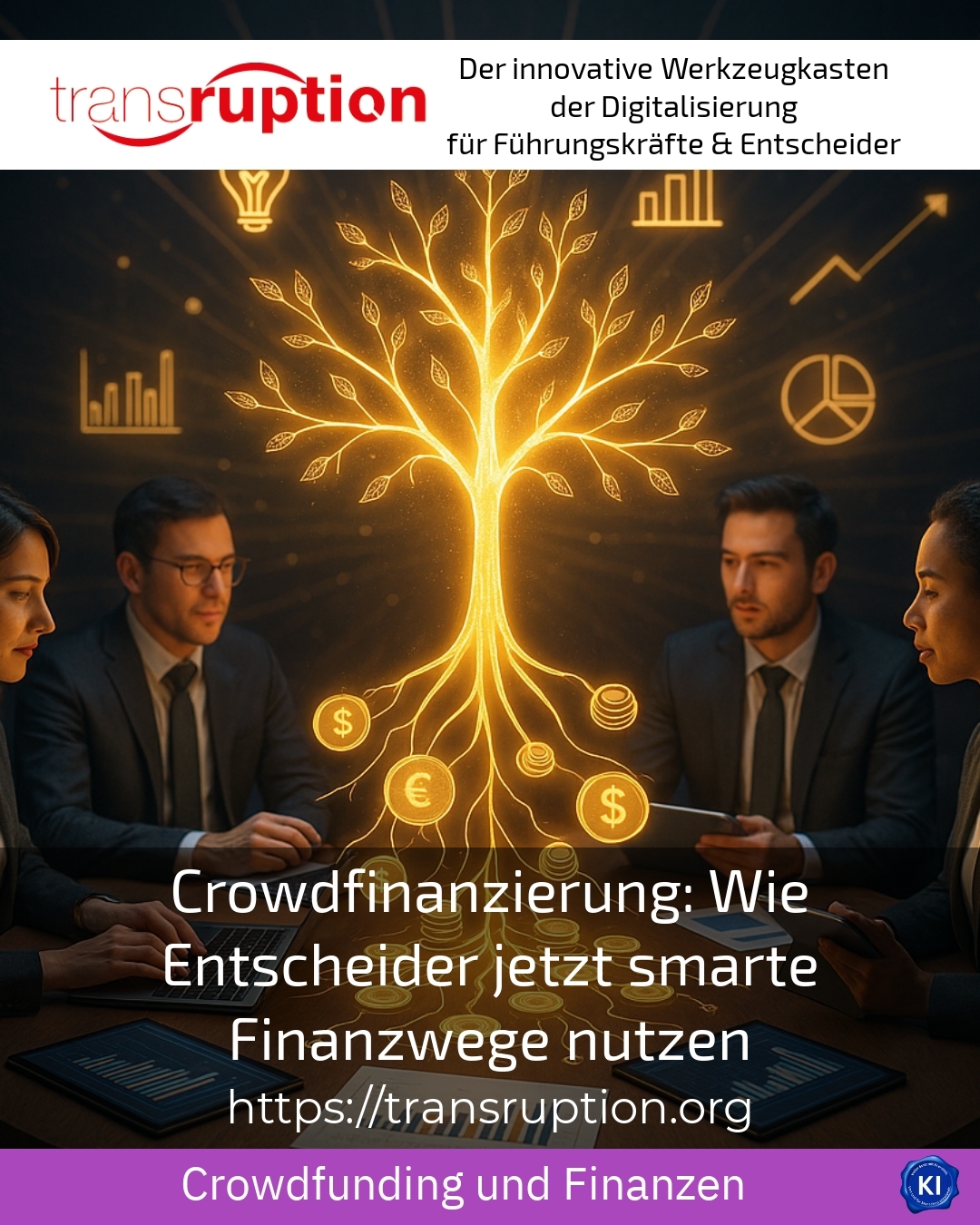At a time when traditional banks only offer limited solutions for many projects, crowdfunding is rapidly gaining in importance. More and more decision-makers are discovering the opportunities behind the concept of crowdfunding and are using it to realise innovative projects - from cultural initiatives to sustainable start-ups. Crowdfunding makes it possible to raise capital together with a committed community without having to rely on traditional forms of financing[1]. Especially in dynamic markets, this method provides a decisive advantage because it combines flexibility, transparency and proximity to the target group.
How crowdfunding works in practice
Crowdfunding is based on the principle that many people make small contributions in order to achieve great things together. Project initiators use specialised online platforms to present their ideas, define a funding target and offer their supporters attractive rewards in return[1][3]. There are various models: in classic reward-based crowdfunding, supporters receive a thank you, in equity-based crowdfunding, company shares are awarded and in lending-based crowdfunding, interest-bearing loans are granted[1][9].
BEST PRACTICE at the customer (name hidden due to NDA contract) An innovative brewery wanted to launch a new, climate-neutral beer on the market, but was having difficulty getting a bank to back the project. The company launched a campaign via a renowned crowdfunding platform, where supporters could receive exclusive tastings, personal brewery tours and even naming rights to individual batches. The project was not only fully funded, but also generated strong community loyalty and media attention.
Another example is a social project that used crowdfunding to finance a mobile medical practice for rural regions. Here, donors received regular updates and the opportunity to take part in the inauguration on site. Technical start-ups also use crowdfunding to develop prototypes and directly involve their first customers.
Advantages of crowdfunding for decision-makers
Decision-makers who opt for crowdfunding benefit from several aspects. Firstly, the financing is independent of banks and investors, which allows more freedom in the design of the project[1]. Secondly, the campaign serves as a valuable marketing tool because it generates attention and actively involves the target group. Successful projects often report more intensive customer loyalty and greater market transparency.
BEST PRACTICE at the customer (name hidden due to NDA contract) An art collective from Berlin planned an interactive exhibition for which traditional funding was not sufficient. The initiators launched a crowdfunding campaign in which people interested in art could receive personalised thank-you letters, signed prints and invitations to exclusive preview evenings. The campaign was not only funded, but also attracted sponsors from the local business community. The exhibition was a complete success thanks to the broad support.
Typical stumbling blocks and how to avoid them
Although crowdfunding offers great opportunities, there are also challenges. Many decision-makers underestimate the effort required for a professional campaign. This includes a clear project description, appealing videos and images as well as targeted communication on social media. Choosing the right platform is also crucial. Startnext is considered the largest German platform for creative and innovative projects, EcoCrowd focuses on sustainability, and Kickstarter and Indiegogo are established internationally[2][4][6].
BEST PRACTICE at the customer (name hidden due to NDA contract) A start-up from the GreenTech sector wanted to develop a new solar storage system, but initially failed due to the high transaction costs on an international platform. With transruptions coaching, the campaign was specifically realigned, the community approach optimised and the appropriate thank-you gifts selected. Following this relaunch, the financing target was significantly exceeded and the product was successfully launched on the market.
5 concrete steps to successful crowdfunding
If you want to make the most of crowdfunding, you should take a structured approach. The following steps have proven themselves in practice:
1. define target group: Who should support the project? What interests and needs does this group have?
2. select platform: Depending on the type of project and target group, specialised or broad platforms such as Startnext, EcoCrowd or Seedmatch[2][4] are suitable.
3. prepare the campaign: A clear, emotional story, meaningful images and videos, as well as realistic financing targets are essential.
4. start communication: Social media, newsletters and press work accompany the campaign and ensure visibility.
5. design thank-you gifts: Attractive rewards increase the motivation of supporters and strengthen loyalty.
My analysis
Crowdfunding is no longer a niche phenomenon, but an important component of modern financing strategies. Decision-makers who get to grips with the topic at an early stage not only receive capital, but also access to a motivated community and valuable feedback. The advantages are obvious: flexibility, independence and the opportunity to test innovative ideas directly on the market.
Especially in times of change, crowdfunding provides impetus for new business models and promotes entrepreneurial creativity. Those who receive competent support from the outset - for example through transruptions coaching - significantly increase their chances of success and can master challenges with confidence.
Further links from the text above:
What is crowdfunding? Definition and explanation [1]
Crowdfunding: platforms, tips and ideas for campaigns [2]
The 26 best crowdfunding platforms in Germany [4]
Crowdfunding platforms: The 10 best options [6]
Crowdfunding: definition, types and success factors [3]
Crowdfunding - IHK Berlin [9]
Crowdfunding explained simply [5]
For more information and if you have any questions, please contact Contact us or read more blog posts on the topic TRANSRUPTION here.
















